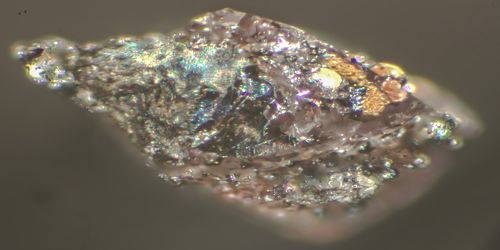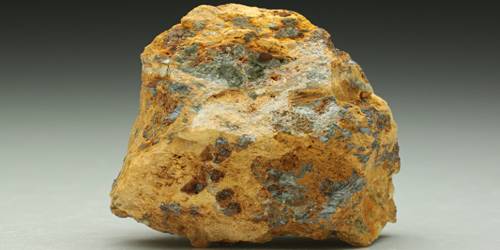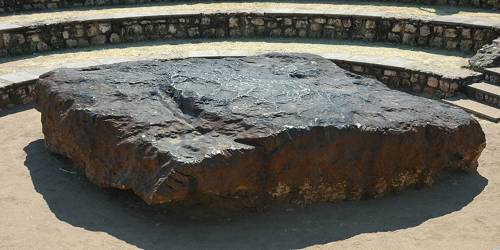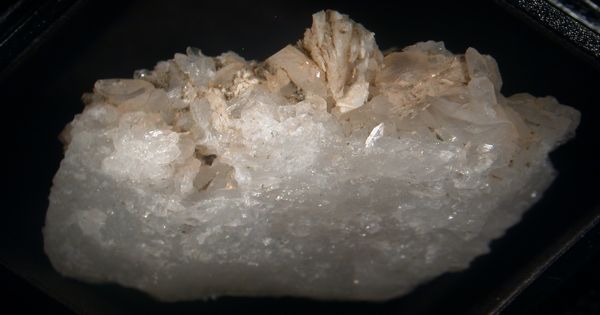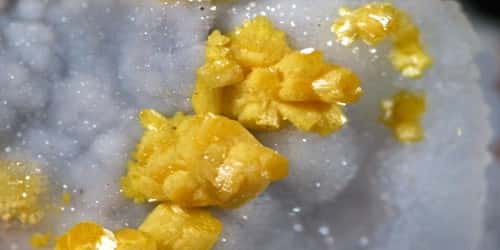Jarosewichite is a rare manganese arsenate mineral with formula: Mn23+Mn3+(AsO4)(OH)6. It was first described in Franklin, New Jersey which is its only reported occurrence. Its chemical composition and structure are similar to chlorophoenicite. This mineral is orthorhombic with 2/m2/m2/m point group. Its crystals are prismatic or barrel-shaped. The color of jarosewichite is dark red to black. It has the subvitreous luster of fracture surfaces and reddish-orange streak. This mineral occurs with flinkite, franklinite, andradite, and cahnite.
General Information
- Category: Arsenate mineral
- Formula: Mn23+Mn3+(AsO4)(OH)6
- Crystal system: Orthorhombic
- Crystal class: Disphenoidal (222)
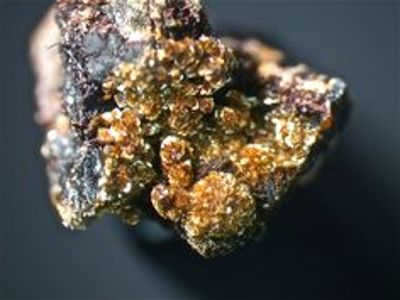
Fig: Jarosewichite – a manganese arsenate mineral
Properties
The color of jarosewichite in nature is very dark red, sometimes black. It has the subvitreous luster of fracture surfaces and reddish-orange streak. The Mohs scale of hardness is almost 4. The density is 3.66(4) g/cm3, which is determined by heavy liquid techniques. This value is very similar to the calculated result of 3.70 g/cm3.
- Color: Very dark red
- Cleavage: None observed
- Fracture: Irregular – uneven
- Tenacity: Brittle
- Mohs scale hardness: 4
- Luster: Subvitreous
- Streak: Reddish orange
- Diaphaneity: Translucent through thin edges
- Specific gravity: 3.66
- Optical properties: Biaxial (-)
Geologic occurrence
Jarosewichite was first found by David K. Cook in Franklin, Sussex County, New Jersey. It always occurs with flinkite, franklinite, andradite, and cahnite. The mine specimen has a stratified crust of vugs from metamorphosed zinc orebody. There are some small crystals of hausmannite, allactite, and cahnite on the vugs, which formed with jarosewichite.
Association: Flinkite, cahnite, allactite, hausmannite, andradite, franklinite.
Information Source:
